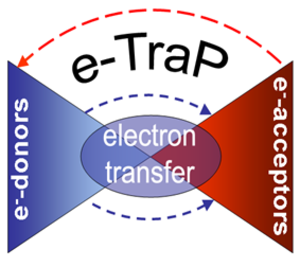Identification of polysulfides and their importance as intermediate sulfur species for electron transfers processes in anoxic aquifers
DFG FOR 580 PLA
Von 10/2009 bis 09/2014Projektleiter: Britta Planer-Friedrich, Andreas Kappler
Mitarbeiter: Sophie Fortenfant, Baktiyor Normatov, Regina Lohmayer
The central hypothesis of the project is that polysulfides as intermediate sulfur species are important for electron transfer processes in anoxic aquifers. In the first part of the project, we will establish elemental sulfur and polysulfide separation after derivatization with methyl trifluoromethanesulfonate by reverse-phase chromatography coupled to inductively-coupled plasma mass-spectrometry. Identification, quantification, and detection of analytical artefacts during analysis of derivatized polysulfides will be possible by comparison with synthesized reference materials. Electro-spray mass-spectrometry will be used to confirm the identity of the synthesized dimethyl polysulfides. Speciation of sulfide, thiosulfate, polythionates, sulfite, and sulfate will be achieved based on established anion-exchange-chromatographic methods.
In the second part of the project, the importance of polysulfides as electron shuttles for the indirect reduction of both biogenic and abiogenically synthesized ferric iron hydroxide (ferrihydrite) by Sulfurospirillum deleyianum will be investigated. We expect that slight changes in pH influence speciation of intermediate sulfur species and thus the electron transfer mechanisms significantly. Different concentrations of initially present dissolved sulfur species (added alternatively in form of polysulfides, elemental sulfur, or thiosulfate) will be tested to determine the minimum sulfur concentration needed to start the S-cycle-mediated Fe(III) reduction. We will investigate whether total sulfur concentration affects intermediate sulfur speciation within the electron shuttle mechanism. Iron sulfides expected to form as major products at higher total sulfur concentrations will be identified and quantified by X-ray diffractometry and Moessbauer spectroscopy. Reduction of iron (hydr)oxides in direct contact with microorganisms will be compared to reduction in setups where microorganisms are separated from the mineral phase.
In the third part of the project, experiments setup by other members of the research group will be used to determine the role of polysulfides as electron acceptors and donors during sulfide oxidation by ferrihydrite reduction in the presence of dissolved organic compounds, during sulfur disproportionation, and finally in an anoxic aquifer in the presence of dissolved organic matter to determine the relevance of the individual processes under natural conditions.



